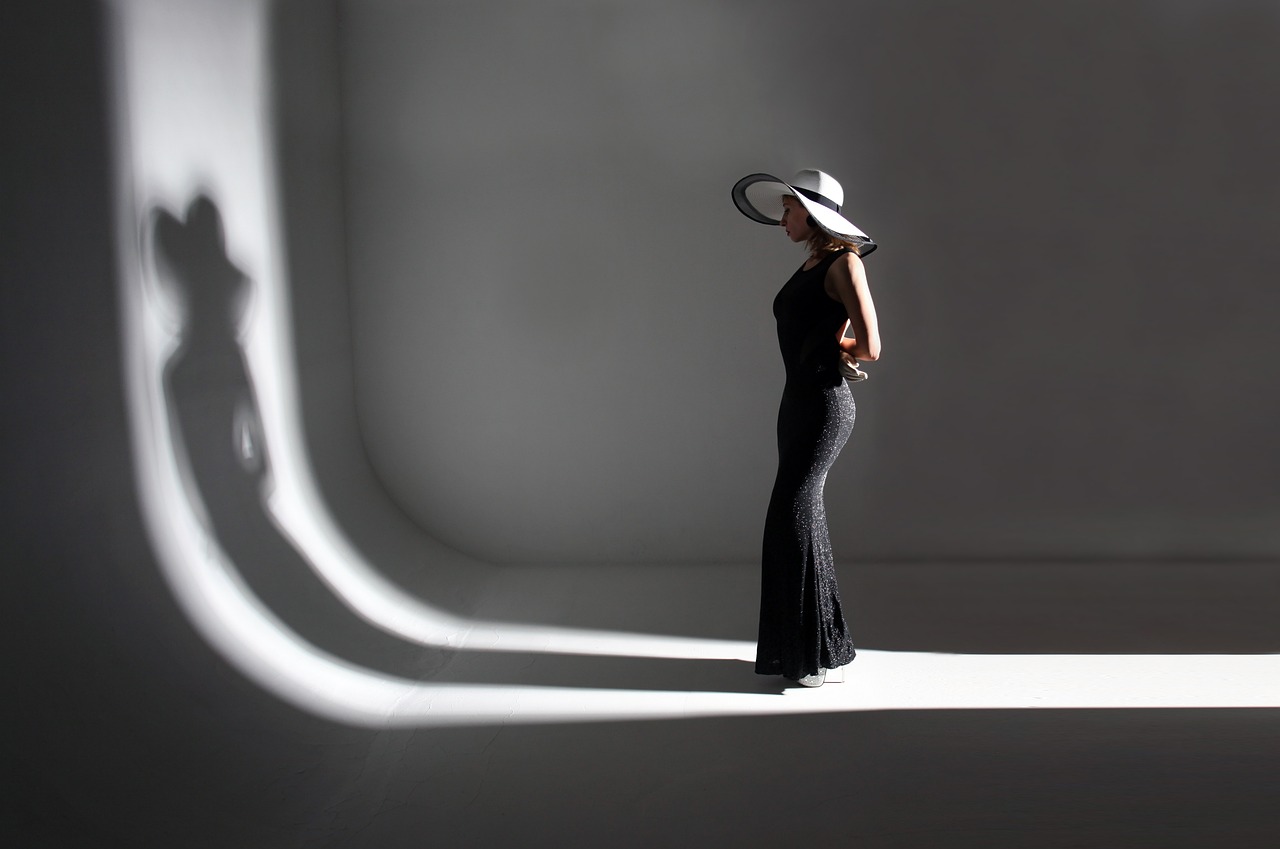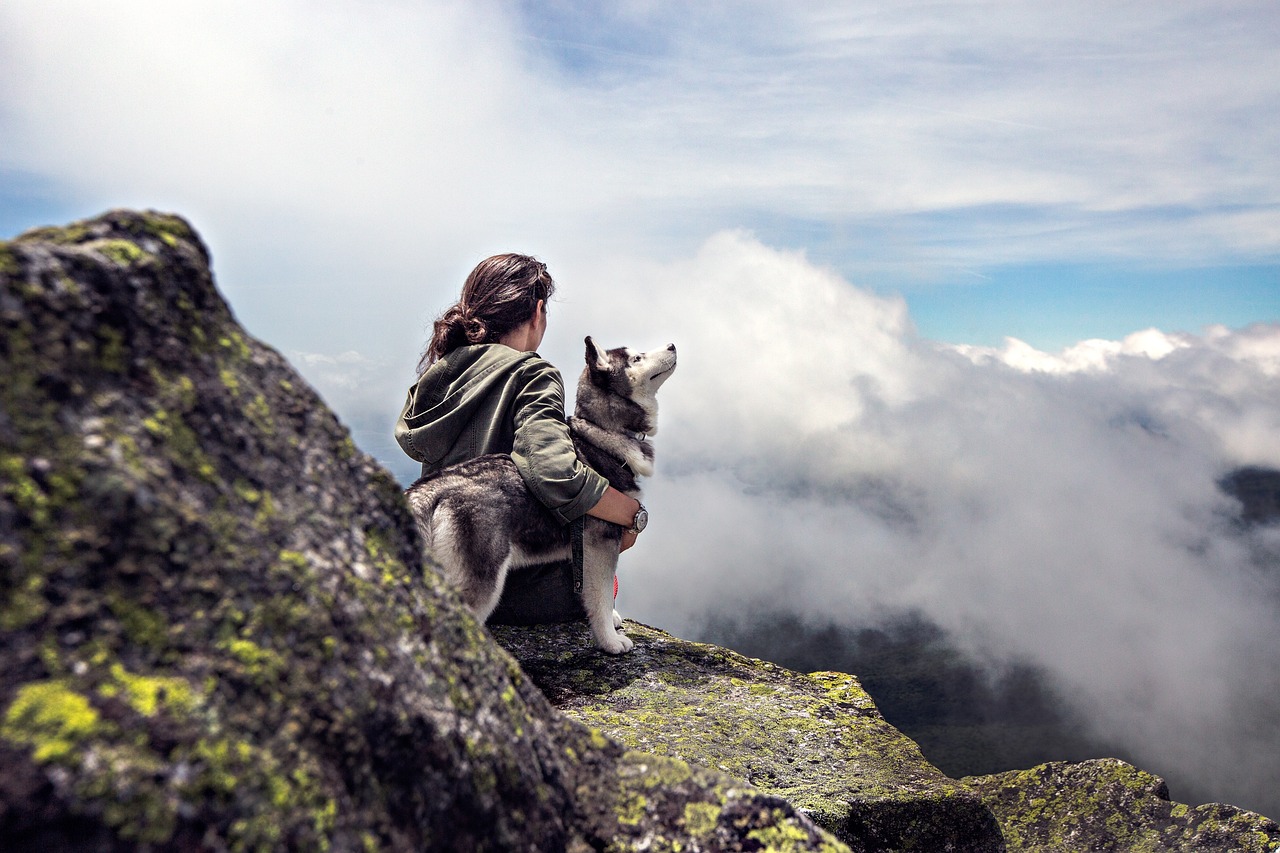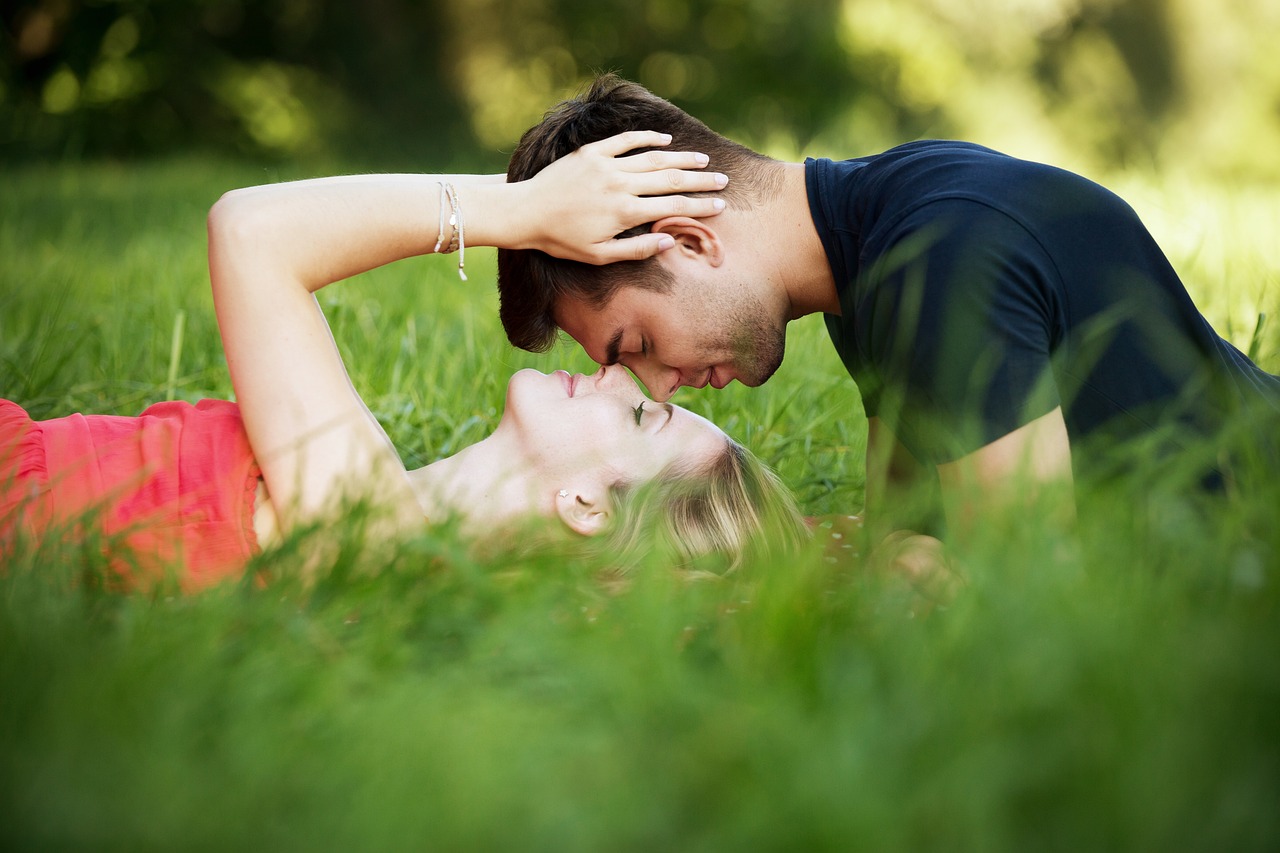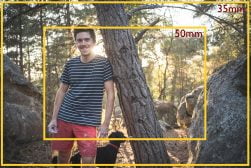
How to Choose The Best Focal Length For Portrait Photography
To shoot stunning portraits, you need the best focal length for the job! In this guide, we'll take you through different lens focal lengths and help you choose.
Learn | By Ana Mireles
It’s not easy to choose the best focal length for portraits since there are so many factors to consider.
Is it better to have one zoom or many prime lenses? Should you get a wide-angle or a telephoto?
Does it matter what types of portrait photography you undertake?
These are common questions for photographers looking to get serious in portrait photography.
Unfortunately, there isn’t a straight answer. Here we tell you the pros and cons of the most popular lenses.
This way, you can choose the one that’s best for your style of photography.
Let’s get started!
What Is the Best Focal Length for Portraits?
Generally speaking, the best focal length for portraits is 85mm. It’s a flattering focal length because it doesn’t distort the subject’s facial features.
You can use a 50mm lens on a crop-factor lens to get a similar effect – see our comparison of 50mm vs 85mm sample images.
That said, there are advantages and disadvantages to each focal length when it comes to portraits. Your choice will also depend on the type of portrait you’re taking.
So, we’ll look at each focal length in more depth below.
(You should also read our guide that covers what focal length is in photography and what are the best lenses for portrait photography.)
Fisheye lens for portraits

Credit: Cottonbro Studio 8mm (left) / Svets Production 14mm (right)
This lens is not a typical portrait lens focal length but has gained popularity for the images it produces.
The term fisheye refers to lenses with a very short focal length. Generally speaking, up to 14mm is considered a fisheye lens.
These lenses create a huge distortion. The shortest ones create a vignette effect.
As you can imagine, these aren’t very popular lenses in portrait photography. Except for special effects like faking a peephole.
17mm lens for portraits

Credit: ITmirror
This focal length is on the verge between an ultra-wide angle and a wide-angle lens.
They still create a noticeable distortion, especially on the edges. They won’t make the circle vignette framing the subject in a circle like fisheye lenses do.
If you need to cover a wide area and don’t have much space, this lens focal length might be your only choice.
To minimize the distortion on the subject, keep your model in the center of the composition.
24mm lens for portraits

Credit: Victoria Model
A 24mm lens may be used in portrait photography if you want to include much of the background.
How Much Do You REALLY Know About Photography?! 🤔
Test your photography knowledge with this quick quiz!
See how much you really know about photography...

This may be because you’re doing an environmental portrait. Then, the room provides context.
It may also be because it fits your composition technique – for example, using negative space.
This focal length is also good for photographing large groups. However, it’s not a popular focal length if you want to cover most of the frame with the subject.
Using a 24mm lens on a crop sensor camera corresponds to a 35mm focal length on a full-frame camera.
So the distortion is not as intense. That’s why this is a common focal length for portraits if you have an APS-C camera.
28mm lens for portraits

Credit: Yan Krukov
This focal length is quite similar to 24mm. The choice between both lenses depends on other factors.
The first one is the aperture. Generally speaking, 28mm lenses don’t reach apertures as wide as the 24mm ones.
Most 28mm lenses are f/2.8 or even f3.5. Of course, there are some f/1.4, but it’s not as common.
Another thing to consider between the 24mm and 28 mm regards zoom lenses. Some manufacturers prefer to start the zoom range at 24mm and others at 28mm. It also depends on the longest focal length they reach.
For example, you might prefer a 28-1355mm zoom lens instead of a 24-70mm or vice-versa.
In any case, the uses for a 28mm lens in portrait photography are the same as the ones for a 24mm focal length.
35mm lens for portraits

Credit: Pexels
This is arguably the most popular portrait focal length. Some even argue that this is one of the few best focal lengths for portraits.
Most professional portrait photographers use a 35mm lens when they need a wide angle.
It has a wide enough angle of view to give a sense of space or frame a big group of people. However, it doesn’t create as much distortion as the previous focal lengths.
This is a very versatile portrait lens. You can capture a full-length shot without needing much distance. Or, you can get closer to your subject without deforming the facial features.
50mm lens for portraits

Credit: Arsham Haghani
A 50mm lens is known as the nifty fifty. It’s the most popular focal length in portrait photography.
This is the standard focal length in full-frame cameras and 35mm film cameras. It’s the one that captures things as the human eye sees them.
That’s why it’s the perfect lens for shooting portraits. The subject’s face will have minimal to no distortions.
It’s not an expensive lens, either. These lenses have a very wide aperture without increasing the price. Most commonly, they have an aperture of f/1.8. Some may even be f/1.4 or f/1.2.
That’s another reason why this is the best lens. It allows you to keep a shallow depth of field to blur the background.
Many professional portrait photographers swear by the nifty fifty. If you only have one prime lens, this should be it.
70mm lens for portraits

Credit: Hermann
This lens is a short telephoto. This means that you’ll have a narrower field of view than you had with the previous focal lengths.
The good thing is that it gives you a comfortable working distance from the subject. Plus, it allows you to blur the background more easily.
It’s not a common focal length as a prime lens. However, it’s common in zoom lenses to be either the shorter or, the longer focal length. For example, 24-70mm or 70-200mm lens.
85mm lens for portraits
This is the favorite focal length for many professional photographers. This is especially so if they do many headshots. Longer focal lengths allow you to get close-ups without distorting the subject.
85mm is one of the best focal lengths to blur the background when you use a large aperture. This lets you isolate the subject, which results in beautiful portraits.
Last but not least, there’s perspective compression. This effect makes the background look closer to the subject. With the right elements in the back, this is a great composition technique.
135mm lens for portraits

Credit: Panajiotis
All the benefits of the 85mm lens get intensified on a 135mm lens. It often comes with a maximum aperture of f/1.8. This, together with the long focal length, achieves a very narrow depth of field and perspective compression. This is why some consider this the best lens size for portraits.
However, its narrow field of view makes it less versatile than other lenses.
It’s still manageable with a full-frame camera. But it’s almost impossible to do indoor portrait photography with APS-C cameras. Unless, of course, it’s a very big area.
So, depending on the type of portrait photography you do, this might not e your first choice as a prime lens.
However, many zoom lenses have 135mm as the longest focal length. So, you can opt for one of these to keep it as an option without buying different lenses.
200mm lens for portraits

Credit: Sasint Tipchai
200mm is not a typical focal length for portrait photography. Especially if you use crop sensors.
However, some professional photographers use it for outdoor portraiture.
I’ve already explained how focal length impacts the depth of field and perspective compression. So, long focal-length lenses give you further control over the background.
That’s why 200mm can be a great focal length for portrait photography if you have enough space.
Are prime lenses or zoom lenses best for portraits?
Prime lenses provide sharper photos and render details a bit better. However, you can get excellent image quality from zoom lenses too.
One of the most significant differences is the maximum aperture. Prime lenses are brighter than zoom lenses.
Also, to get a large aperture on a zoom lens, you need to spend much extra – mainly to keep it constant in the two extremes.
This makes it challenging to create a shallow depth of field or get a sharp portrait in low light.
The most significant advantage of the zoom lens is its versatility. You have multiple focal lengths without having to change lenses. This makes a big difference, especially when you go on location.
Best Focal Length for Portraits: FAQs
Is 50mm or 85mm better for portraits?
Both 50mm and 85mm are great lenses for portrait photography.
To choose the best lens for you, you need to evaluate which type of portraits you do. If you use wider crops or photograph groups, a 50mm lens would be better. This is especially true if you mostly photograph indoors.
You can use an 85mm for head shots and outdoor portraits. This is because it creates less distortion than a 50mm lens. For beginners, these two are the best portrait focal lengths to choose from.
Is 35mm or 50mm better for portraits?
Both of them are good portrait lenses. The best lens is the one that better fits your needs. If you photograph large groups or work in tight spaces, 35mm is best.
Instead, if you want to get closer to your subject and have less distortion, a 50mm is better.
It also depends on the type of camera. That’s because, for APS-C cameras, you have to apply the crop factor. So, a 35mm lens on a full-frame camera is like having a 50mm lens on a cropped sensor.
What focal length is best for family portraits?
The short answer would be to get a focal length. Something that ranges from 35mm to 85mm or so.
This is because family portraits range from a couple to a big group. That’s why you need something versatile.
To elaborate on the answer, the best portrait lenses depend on the number of family members.
If you’re capturing a couple with their newborn, you can use a short telephoto lens like an 85mm. Instead, for a family of 8 or 10 people, you’ll need a 35mm lens.
You also need to consider the type of camera and the available space.
Which focal length is best for full-body portraits?
Generally speaking, you need at least a 50mm lens to do full-body photography. It depends on the available space, though.
If you’re outdoors or have a big studio, 50mm and even 85mm are enough. For tight spaces, you’ll need something wider, like a 35mm lens.
This assumes that the subject is standing or lying down. In other words, you need to photograph the body extended at full length.
If the model is seating, crouching, or flexing the body, you can use a longer focal length and still frame the whole body.
See also: 19 full body photography tips, ideas and techniques
What focal length is best for close-up portraits?
Telephoto lenses are best for close-up portrait shots. This is because a wider angle would require you to get too close to the subject.
This would distort the face. Also, it would make it more awkward for the model, and they wouldn’t look natural in the picture.
What is the best focal length for group portraits?
It all depends on the size of the group. A 35mm lens on a full-frame camera should work for large groups. For small groups, you can use a 50mm lens.
What is the best focal length for environmental portraits?
Environmental portraits need to include a big portion of the background. So, you need a wide-angle lens.
A 35mm lens is usually enough. However, if the background is too big and you can’t get enough distance, you might need a shorter focal length.
Final Words on Focal Lengths for Portrait Photography
Buying a lens requires a big investment. It’s important that you choose one that will help you work and improve as a portrait photographer.
As you can see, the focal length has to do with the practical side of the shoot. How big is the space? How many subjects? And so on.
Not just that, but it also has to do with the final image. How much do you want to blur the background? How do you avoid distortion on the subject? Etc.
So, choosing the best lens isn’t easy. I hope you found enough information here to make the best choice for you and your style.
Share your preferences or ask your questions in the comments. We’re always happy to read you!

Check out these 8 essential tools to help you succeed as a professional photographer.
Includes limited-time discounts.













